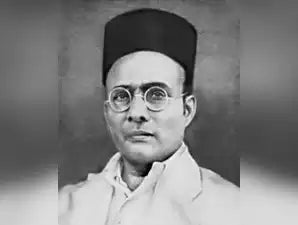
THE AZAD HIND GOVERNMENT: A BOLD STEP TOWARDS INDIAN INDEPENDENCE
Establishment and Leadership
On October 21, 1943, Subhas Chandra Bose, popularly known as Netaji, established the Azad Hind Government (Free India Government) in Singapore during World War II. Bose, a prominent freedom fighter, declared himself the Prime Minister, Head of State, and Minister of War. This move was a significant step in his relentless pursuit to liberate India from British rule. Among the notable leaders in this government was Captain Dr. Lakshmi Swaminathan, who led the women's organization and commanded the Rani Jhansi Regiment, Asia's first all-women battle brigade within the Indian National Army (INA).

Support from Axis Powers
The Azad Hind Government, also known as Arzi Hukumat-e-Azad Hind, received backing from Japan, Nazi Germany, the Italian Social Republic, and their allies. This support was crucial in providing the resources and legitimacy needed for Bose's campaign. The collaboration with these Axis powers underscored Bose's strategic approach to seeking international alliances for India's independence.
BUY SUBHASH CHANDRA BOSE T-SHIRT
Authority and Institutions
The Azad Hind Government proclaimed authority over Indian civilians and military personnel in regions of Southeast Asia then occupied by the British. To solidify its governance, the Azad Hind administration established various institutions, including its own currency (the Azad Hind currency), courts, and a civil code. These measures were aimed at demonstrating the functional and administrative capabilities of a free Indian state.

Armed Struggle for Independence
Subhas Chandra Bose was convinced that an armed struggle was the only way to achieve Indian independence. Under the banner of Azad Hind, he aimed to launch a military campaign to liberate India from British rule. The Indian National Army, comprising Indian soldiers who had defected from the British Indian Army, played a pivotal role in this effort. The INA, alongside other freedom fighters like Bhagat Singh, symbolized the intense desire for an independent India.
Decline and Legacy
Bose's untimely death in a plane crash in 1945 marked a significant setback for the Azad Hind movement. The end of World War II and the defeat of the Axis powers further diminished the prospects of the Azad Hind Government. Despite these challenges, the legacy of Bose and the INA endured. Their efforts highlighted the critical role of the Indian Army and the broader freedom movement in the eventual achievement of Indian independence in 1947.
Conclusion
The establishment of the Azad Hind Government by Subhas Chandra Bose was a bold and visionary step towards Indian independence. Supported by international allies and driven by a fierce determination, Bose and his government sought to mobilize both military and civilian efforts to end British colonial rule. The legacy of the Azad Hind Government, alongside the contributions of other freedom fighters like Bhagat Singh and the Indian Army, remains a testament to the enduring spirit of the Indian independence movement.
[The images used in this blog post are not owned by Anime Devta, they are just for entertainment purposes]
| SUBHASH CHANDRA BOSE | BHAGAT SINGH | INDIAN ARMY | NETAJI | INDIAN NATIONAL ARMY | AZAD HIND GOVERNMENT | INA | FREEDOM FIGHTER |
~Mimansa Sharma

